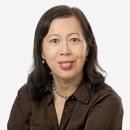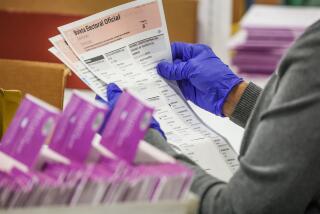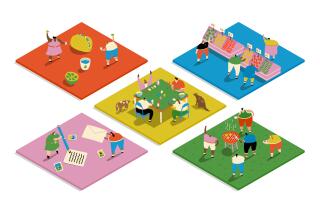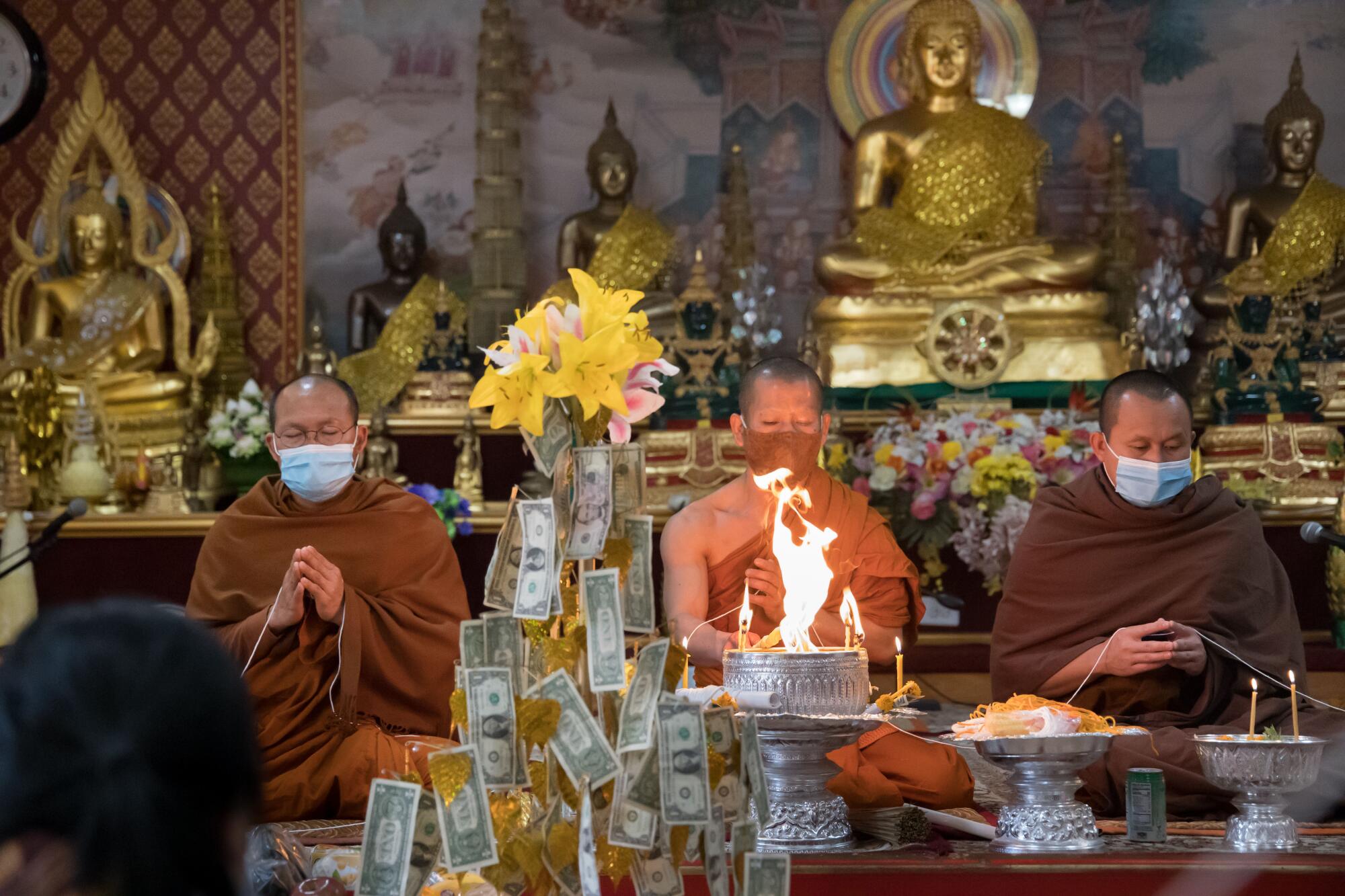
- Share via
RICHMOND, Calif. — After people 65 and older became eligible for COVID-19 vaccinations, Torm Nompraseurt picked up the phone and called one Laotian immigrant after another.
Here’s how to make an appointment, he told them. Someone will find you a ride, and volunteers fluent in both Lao and English will be by your side when you get your shot, he assured them.
Phones were also ringing in Laotian households across the Bay Area as an elaborate network lighted up, spreading the word about vaccinations to older immigrants, many of whom are not fluent in English and don’t use the internet.
The phone tree is so efficient that information often whips through its many branches in less than an hour. It is almost as old as the Laotian immigrant community itself, which took root in the Bay Area and other California cities after the Vietnam War.
In sprawling California suburbs, it is an attempt to re-create village networks from back home.
It is especially important because there are not enough Lao speakers for government agencies to translate fliers, as is often done in Spanish, Chinese, Vietnamese and Korean.
The community is not large enough to support newspapers or television news programs in Lao, leaving monolingual immigrants especially isolated. Some did not know a COVID-19 vaccine existed until they received a call from the phone tree.
At the tree’s base is a cohort of “chairpersons” — prominent community leaders who decide what linguistically isolated senior citizens need to know. They share details with “assistants,” who then pass along the information to local leaders, who each alert a dozen or so people.
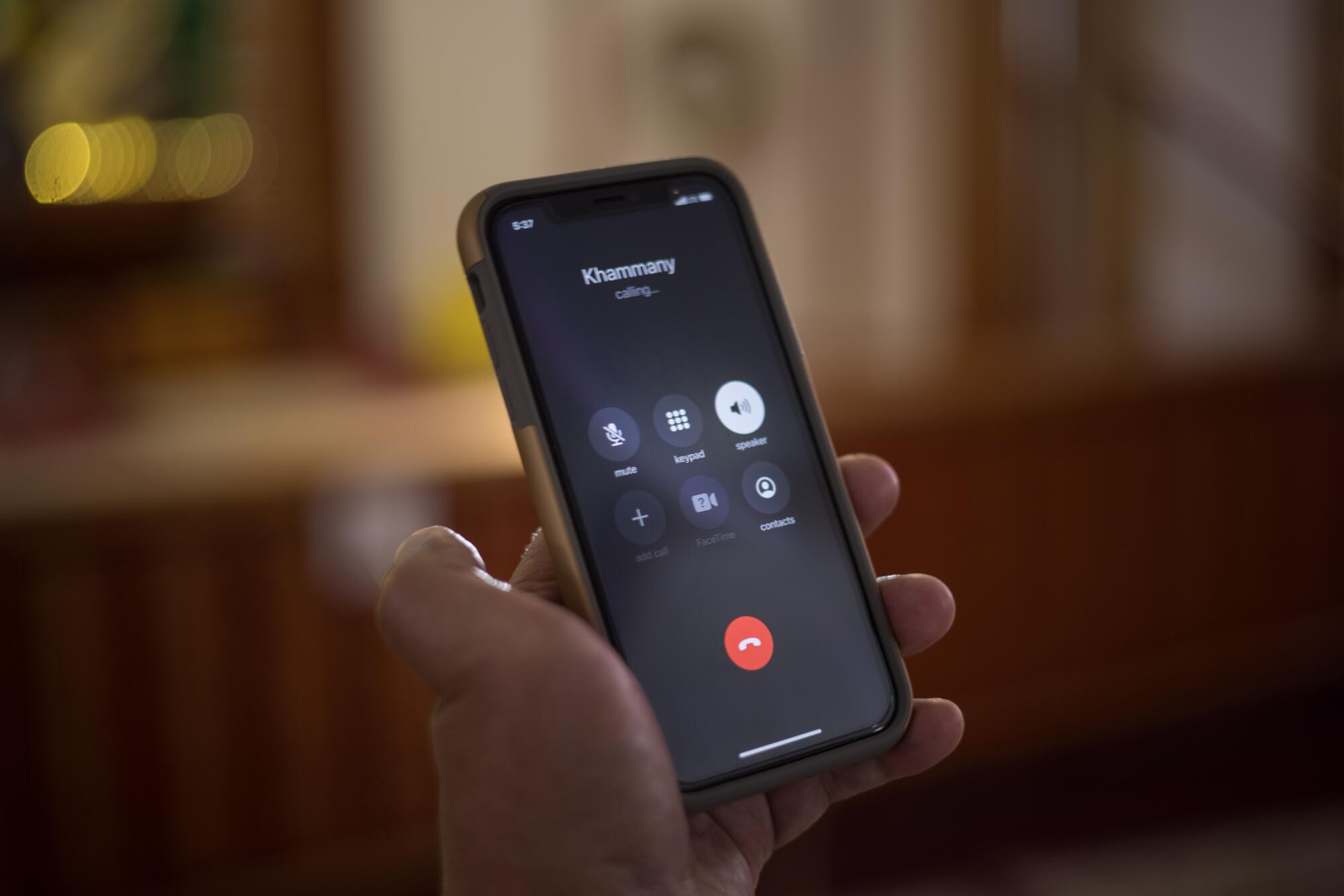
No one knows exactly how large the network is, but it reaches most older Laotian immigrants in the Bay Area, those familiar with it said.
Often, the conversations are business-like exchanges of information. Sometimes, the caller turns counselor, offering reassurance that vaccines are safe or promising that help will be on the way soon.
Other regions with large Laotian populations also have long-standing phone trees that have disseminated lifesaving public health information during the pandemic.
Nompraseurt tells phone tree members that “there is always assistance.”
“Some don’t drive,” he said. “Some are too scared to take public transit because of COVID. We get help coordinating transportation. Sometimes, we load an entire group in one van.”
Pre-pandemic, the Bay Area phone tree helped elderly immigrants get their citizenship, register to vote and understand the American political system.
During the pandemic, it has informed them about where to get masks, the details of the latest shelter-in-place orders and how to defend themselves against racist attackers.
It has been an outlet for concerns about sticky rice, a Laotian staple that wasn’t available at local food banks for families who were struggling financially during the state lockdown.
Many Laotian immigrants who lost jobs in the hospitality and restaurant industries needed to know how to apply for unemployment benefits — and whether they qualified for government stimulus checks.
The phone tree has also played a vital role in combating misinformation.

After rumors circulated that the vaccines originated in China or Southeast Asia, community leaders used the network to emphasize their safety and efficacy.
“Really, when you send older people to a county website, try navigating that. It’s another world,” said Khammany Mathavongsy, 49, who serves on the board of the Bay Area Lao Assn. and who helps phone tree leaders get updated coronavirus information. “These are the folks still using flip phones, not using computers.”
The phone tree works in reverse too.
If someone has an urgent need, such as an illness or a funeral, a call to the tree ensures that word quickly spreads.
Soon, a volunteer emerges who can take a senior citizen to the hospital. Donations for a funeral pour in, and people step up to handle the logistics.
In the early days of the vaccine rollout, Nompraseurt‘s phone rang. It was a restaurant worker concerned about side effects.
“Should I register right away, or should I wait for more people to get shots to see how they react?” the worker asked.
“It’s better to get your vaccine — why wait if you want to protect your health?” Nompraseurt responded.
He told the worker about a mobile vaccination site at Richmond High School.
“I want to stay healthy, but there are many unanswered questions about COVID,” the worker said.
“Think about protecting not just you but everyone you live with,” Nompraseurt told him. “The doctors have done their research.”
By late February, many community members had gotten vaccinated — including people who talked to Nompraseurt.
Phoumy Sayavong has seen firsthand the help, from funerals to pandemic advice, that his extended family has received from the tree.
“Mostly, people were very concerned and freaked out about knowing how to live in a pandemic,” said Sayavong, 49, a college research analyst in Berkeley. “At that time, the focus was just on staying home, and the phone tree leaders really stressed that, telling people why they had to remain indoors.”
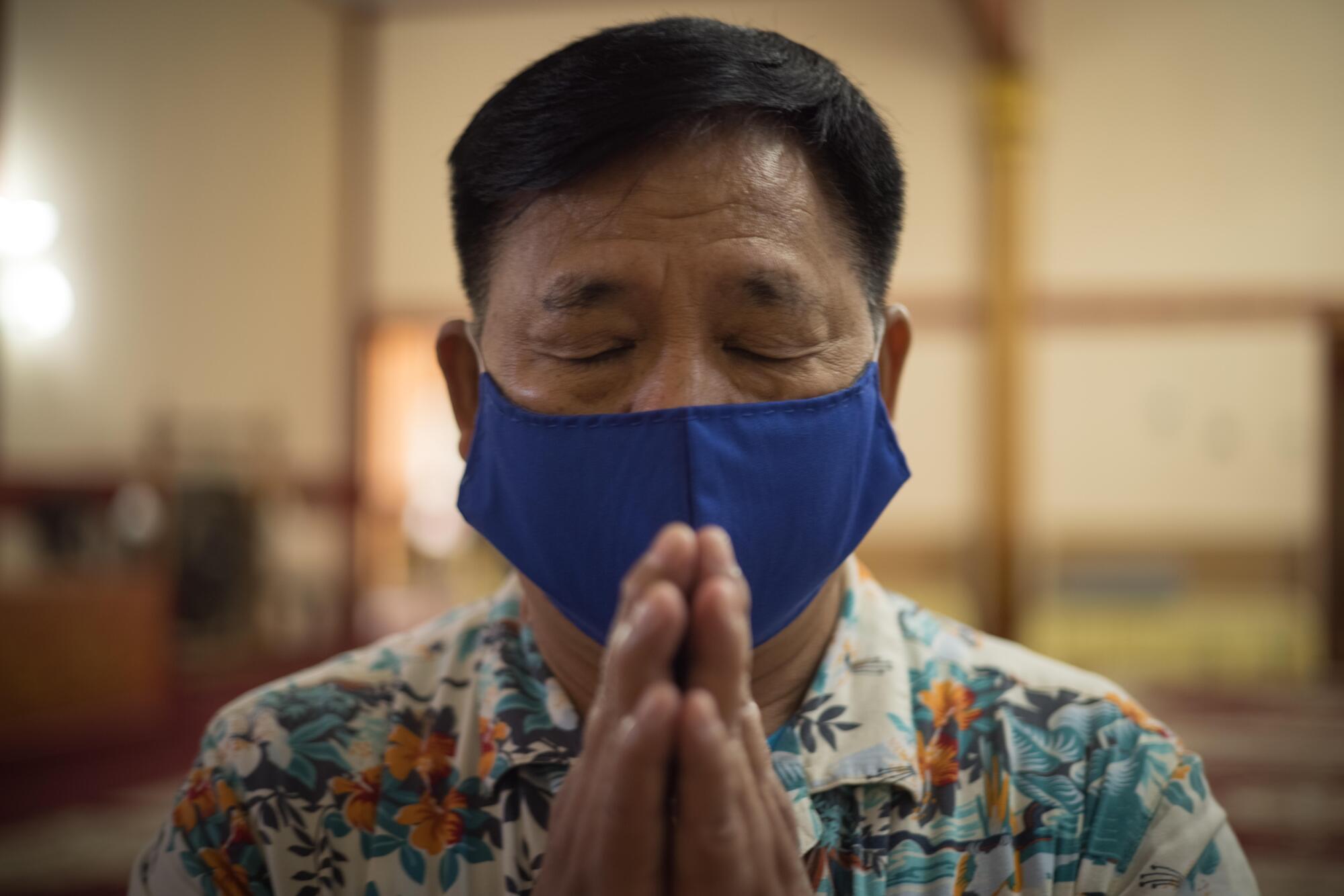
About 15,000 people of Laotian descent live in Richmond and elsewhere in western Contra Costa County, according to community leaders.
In the “Secret War,” the U.S. military fought communist forces in Laos while waging parallel battles in neighboring Vietnam.
After the communists’ victory in 1975, Laotians who opposed them fled, sometimes spending years in refugee camps before coming to the U.S., said Pida Kongphouthone, who chairs the Lao Advocacy Organization of San Diego.
Stories of the U.S. bombing campaign and Laotians’ experiences in prison camps are little known, but state legislators could push to include their perspectives in a model curriculum.
Outside California, Laotians settled in cities including Dallas, Minneapolis and Nashville.
On average, Laotians have lower incomes than other Asian Americans, according to the Pew Research Center. Many work low-wage jobs that leave them little time to learn English.
Back home, before the war, villagers did not have phones. They communicated through messengers who would rely important information such as the need for farm labor, Normpraseurt said.
In a country with dozens of ethnic groups, that was a complicated task.
In the U.S., those who are fluent in English and connected to the mainstream world need an efficient way of communicating their knowledge with those who aren’t.
“This phone tree is a variation of what’s used in the homeland,” Nompraseurt said.

In early spring, Sarah Vang’s elderly aunt grew feverish and had trouble breathing.
The high school student in San Francisco whose mother had died and whose father was busy working suspected her aunt had COVID-19.
Where to go for a test? The aunt was a seamstress who spoke only Lao. Who could translate? Who could fill in at work?
Vang called a community chairman, who promised that someone from the network would contact her with “good solutions.”
Sure enough, a bilingual volunteer showed up before dinner to accompany her aunt to a coronavirus test. A second volunteer picked up the sewing orders.
The aunt, who is in her 70s, tested positive and eventually recovered.
“Imagine what would have happened without their quick action,” said her niece, 17. “I’m stuck in virtual school. My father cannot get time off from work to drive anyone around. We didn’t have anyone to reach out to.”
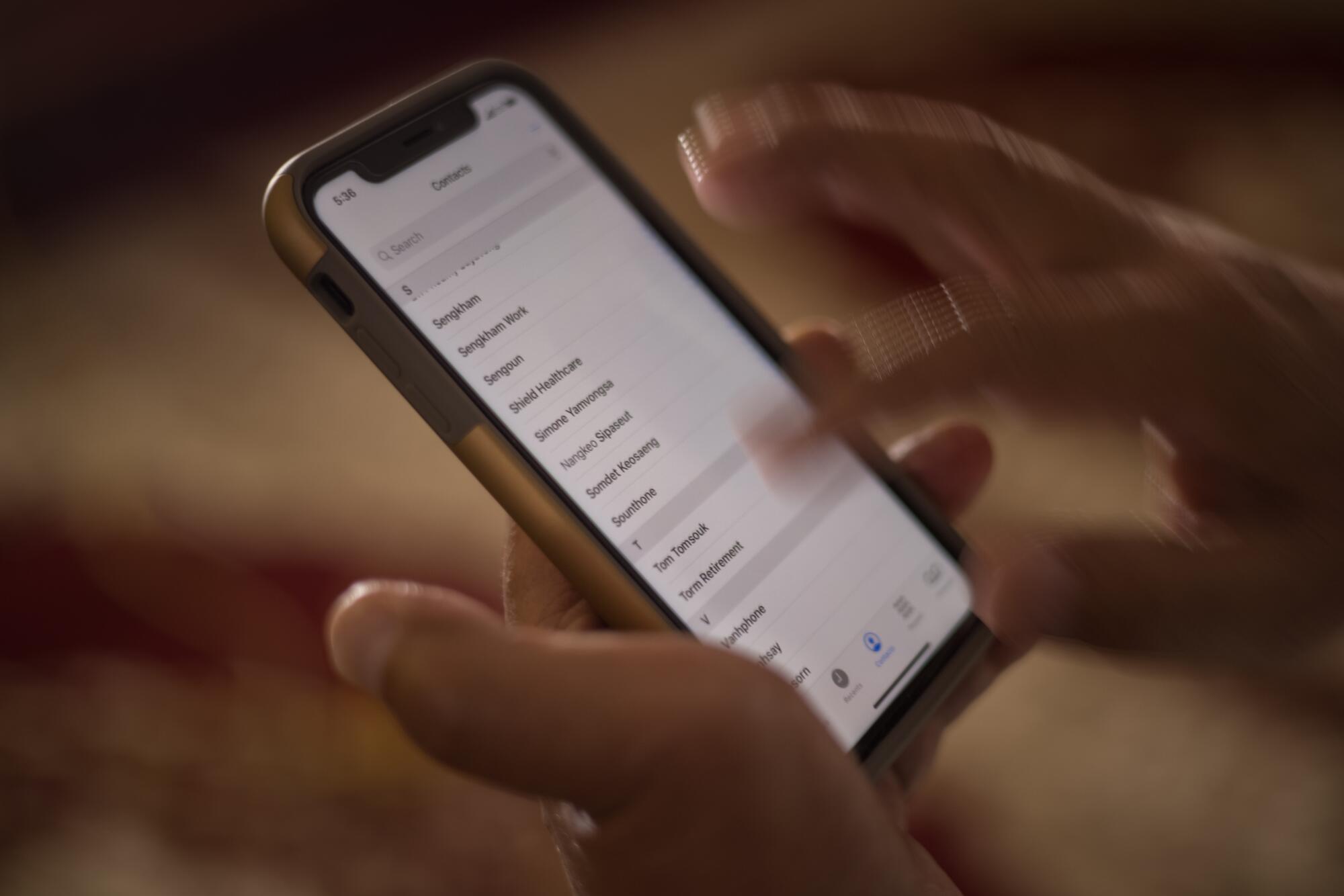
After word spread about the lack of sticky rice, the Asian Pacific Environmental Network, where Nompraseurt is a community organizer, donated more than $5,000.
Another group, the Laotian Leaders Network, used the money to purchase 200 bags of rice for needy families.
“We need to remember that when immigrants can’t read or write English, they must depend on a community network to guide them,” said Sary Tatpaporn, a member of the Laotian Leaders Network who offered advice on outreach. “If this system didn’t exist, how can people function successfully day to day?”
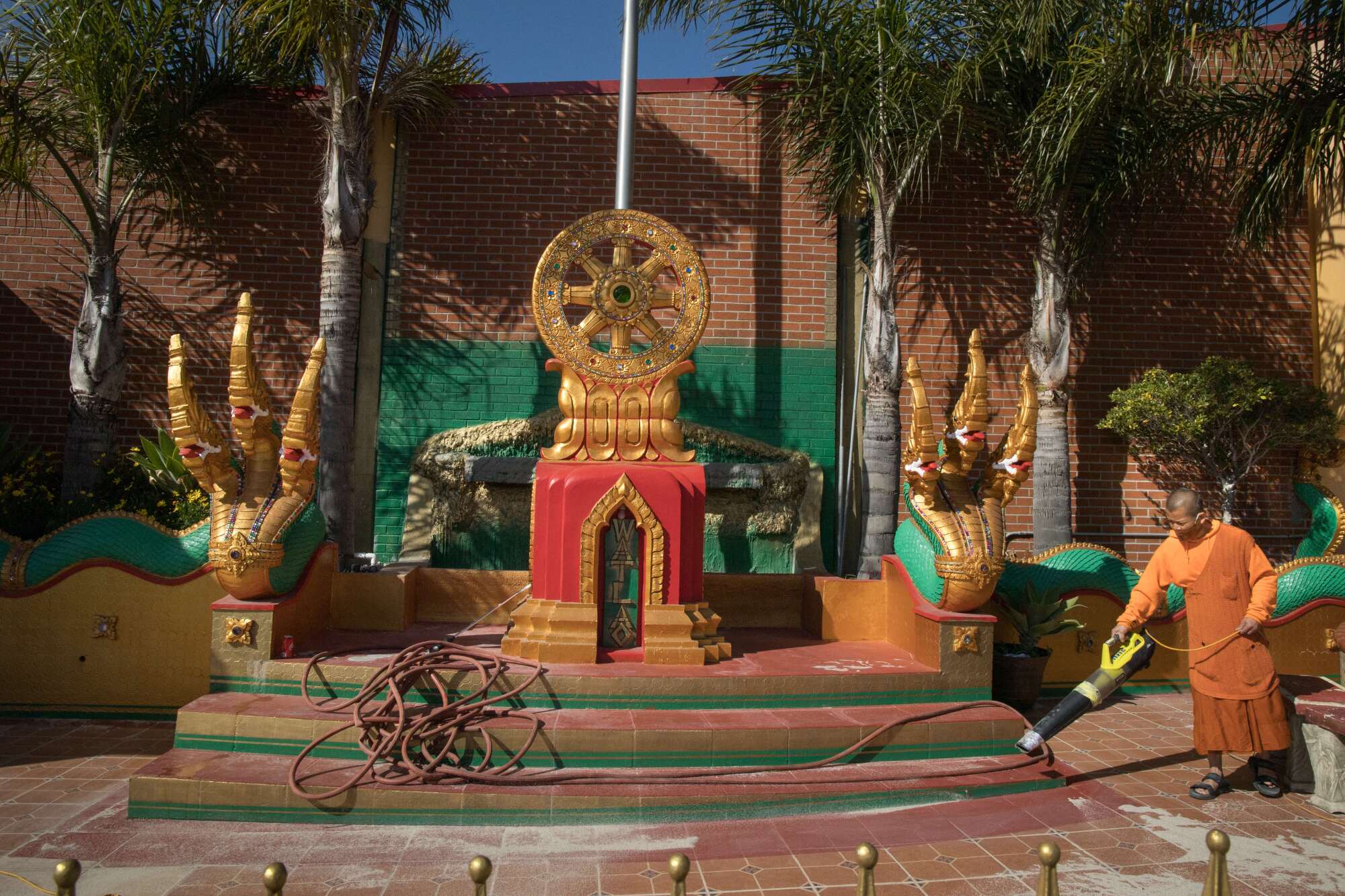
Other communities can use the Laotian phone tree as a model for how to reach isolated people, said Prany Sananikone, board president of the Center for Lao Studies in San Francisco.
“Why not take the best practices and share them so others can help their elderly as well?” he said.
The phone tree magnifies the reach of the community’s physical gathering places, including the Bay Area’s only Laotian Buddhist temple, Wat Lao Rattanaram.
The temple has about 450 families on its mailing list, sending physical newsletters to homes, because not everyone is online.
For a recent vaccination campaign, the temple’s six monks all got shots, serving as an example for phone tree leaders to cite.
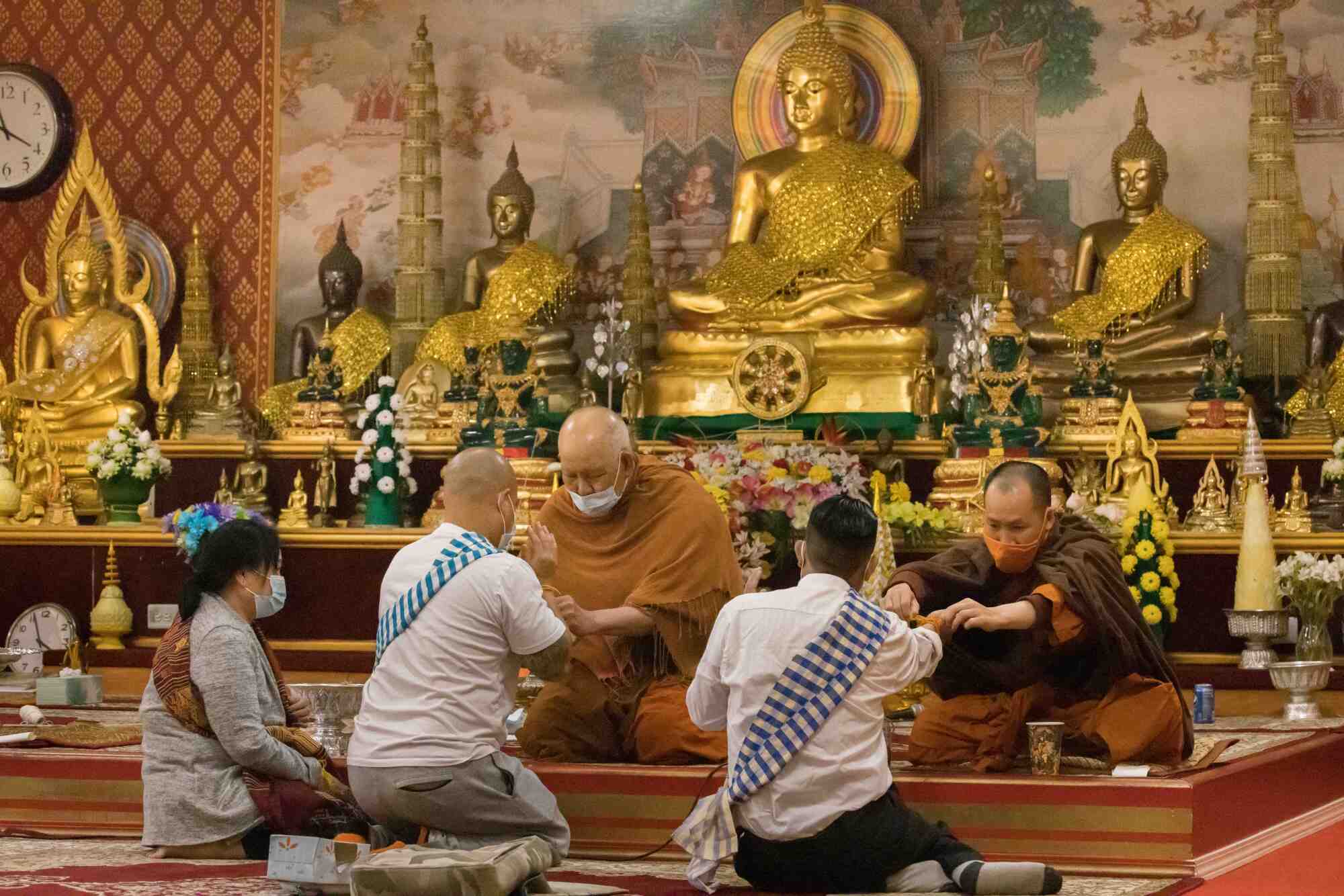
When some community members decided to participate in the Auntie Sewing Squad, a grass-roots effort to make masks, volunteers emerged through the phone tree.
Monks donated fabric from unworn robes, and the volunteers used the temple as a distribution center, said Mathavongsy of the Bay Area Lao Assn.
Immigrant residents often ring the temple phone with questions on topics such as pandemic curfews and how to deal with rising anti-Asian racism, head monk Bouaban Kantasaro said.
“Some of our elders can be depressed, or they are feeling quite isolated,” he said. “We want to be useful. We can share health warnings, as well as reassure people when they need spiritual guidance.”
With the other monks, Kantasaro takes turns answering the phone. But amid their religious duties, they can do only so much.
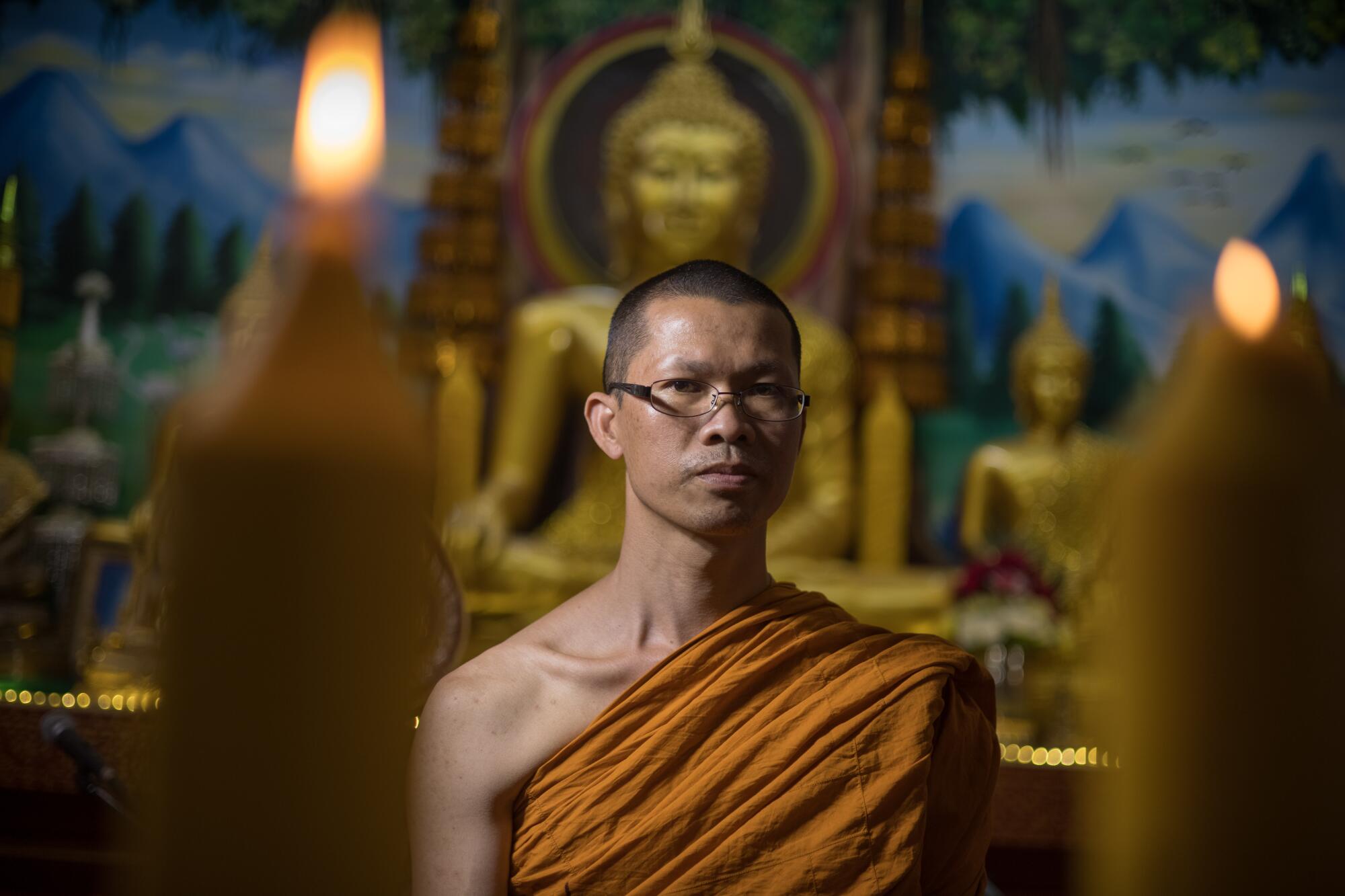
Saeng Syvanthong, 69, once a handyman and groundskeeper, used to get calls from the phone tree. He worked two jobs and never had time for English classes.
“I needed to know the news,” the Richmond resident said.
Now retired, he is giving back.
He is still not a fluent English speaker, but has found a place in the phone tree.
He screens calls from fellow immigrants, then puts them in touch with someone who can help.
More to Read
Sign up for Essential California
The most important California stories and recommendations in your inbox every morning.
You may occasionally receive promotional content from the Los Angeles Times.
